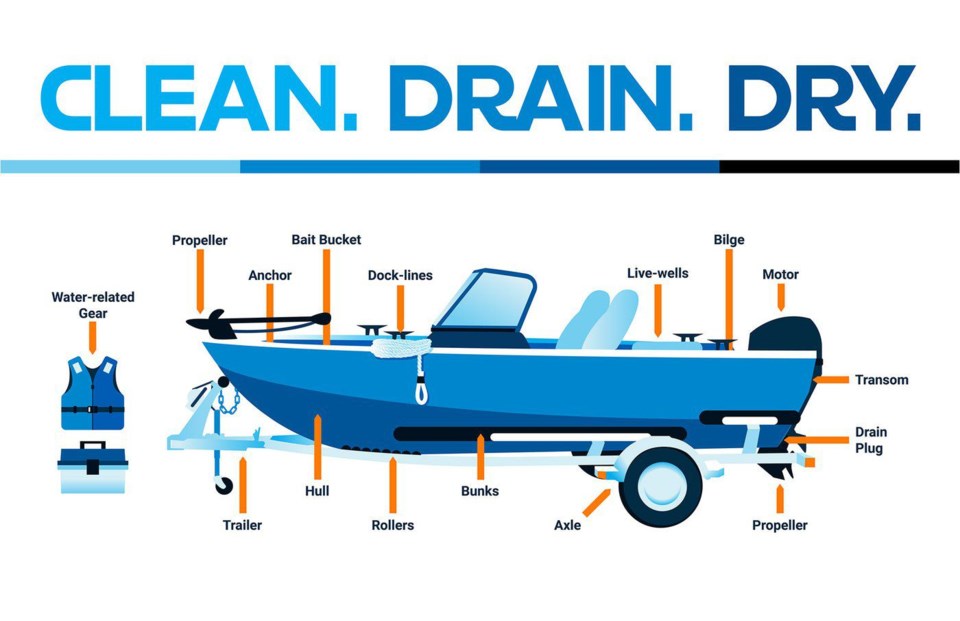SHAUNAVON — Fishing and boating are popular family pastimes in Saskatchewan. Whether you're enjoying Lac Pelletier, Saskatchewan Landin, or Cypress Hills Park, it's essential to remember a few key things to keep our waters clean and free from invasive species.
The most important thing to keep in mind is ensuring your boat is dry and clean after С����Ƶ in the water. This avoids cross-contamination as you move from one body of water to another. After coming out of the water - whether it's a river, lake, or pond - make sure to inspect and clean your watercraft after each use. This includes not only powercraft like motorboats and jet skis but also non-motorized craft like kayaks, canoes, and paddleboards. Additionally, clean and inspect equipment you've used, such as life jackets and fishing gear. Don't forget to clean your trailer and keep it clear of debris.
Inspecting for visible aquatic invasive species, plants, mud, seeds, and standing water in all areas of the watercraft is crucial. Standing water poses a significant risk due to the ability of microscopic aquatic invasive species to survive in water or moist conditions for extended periods and spread from one waterbody to another.
When cleaning your water gear, remember that products that can stay moist - including ropes, anchors, life jackets, and tubes - can easily transport microscopic invasive species unless fully cleaned and dried.
The Government of Saskatchewan plays a secondary role in preventing cross-contamination through inspectors. According to the Saskatchewan Government website's Water Inspection Program, "Every summer, Saskatchewan watercraft inspectors work at points throughout the province to inspect watercraft and equipment for aquatic invasive species. Watercraft inspectors are designated officers under The Fisheries Act and have the authority to visually and physically inspect watercraft, including interior compartments, and water-related equipment such as angling gear, ropes, anchors, and life jackets."
Inspectors are hired to ensure cross-contamination doesn't occur by inspecting your watercraft and equipment. Watercraft owners who have cleaned, drained, and dried their watercraft and equipment typically pass through inspection stations quickly, as they have removed most of the threat of spreading aquatic invasive species by following these best practices.
As inspecting officers work for the government, remember that if you've been directed to an inspection station or told to wait for direction from Ministry of Environment staff, you're legally required to ensure your watercraft and equipment don't contact Saskatchewan waters until an officer performs an inspection/decontamination or provides direction to proceed. Failure to comply may result in fines, and your watercraft may be subject to quarantine.
So, clean and dry your watercraft and equipment after use to ensure you're ready for your next family fun-filled watercraft activity.




